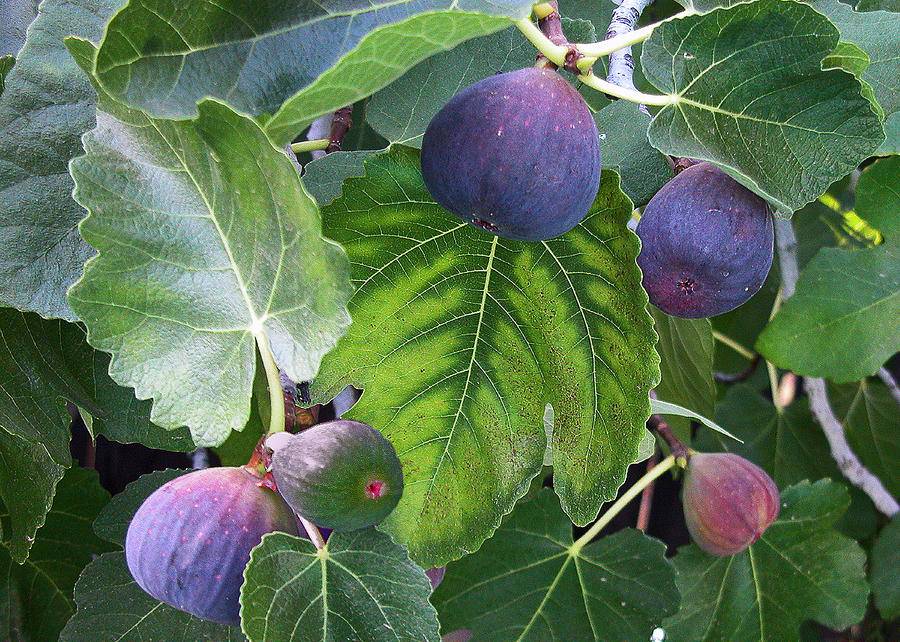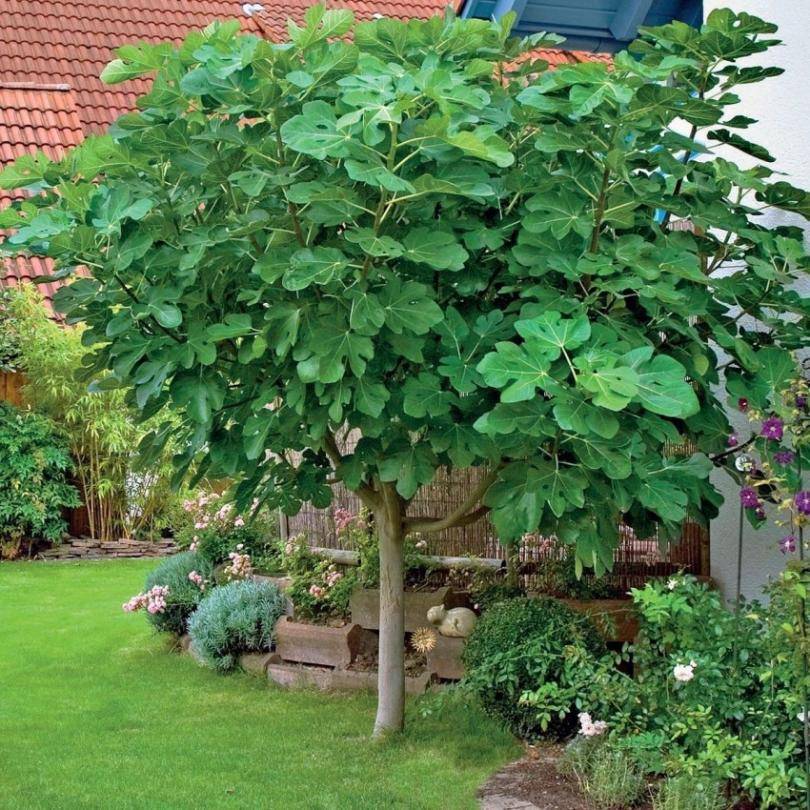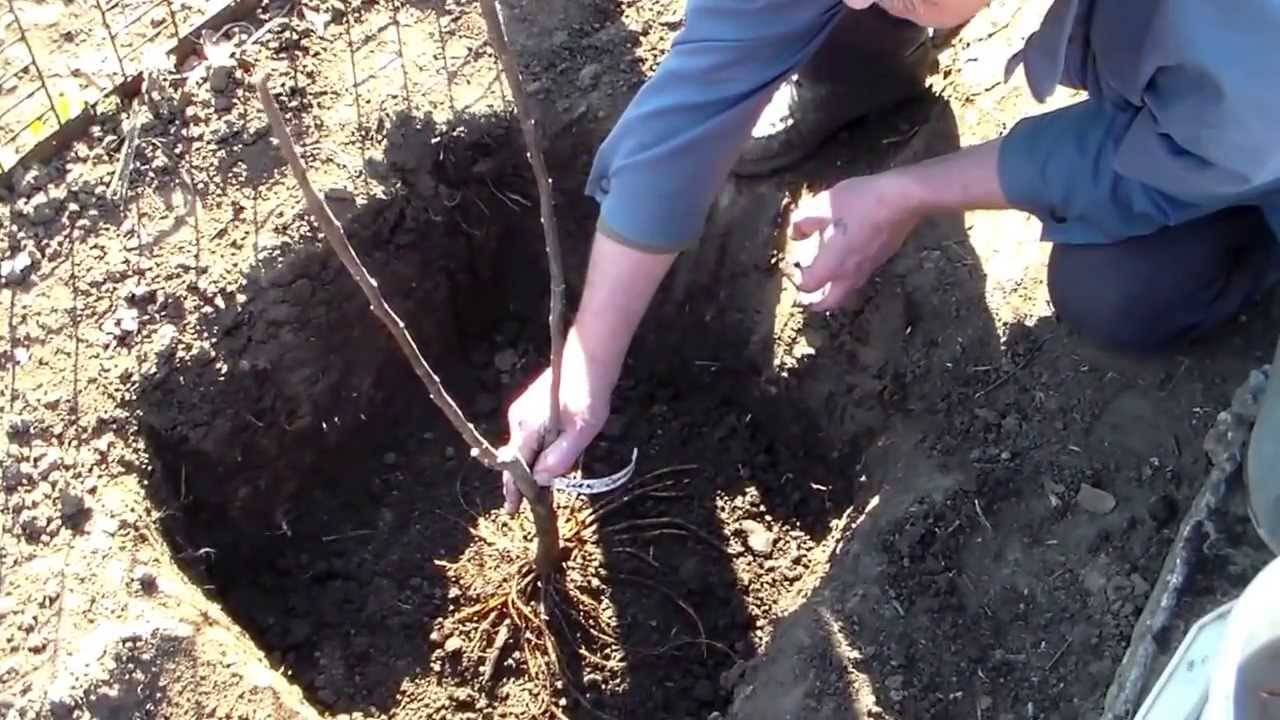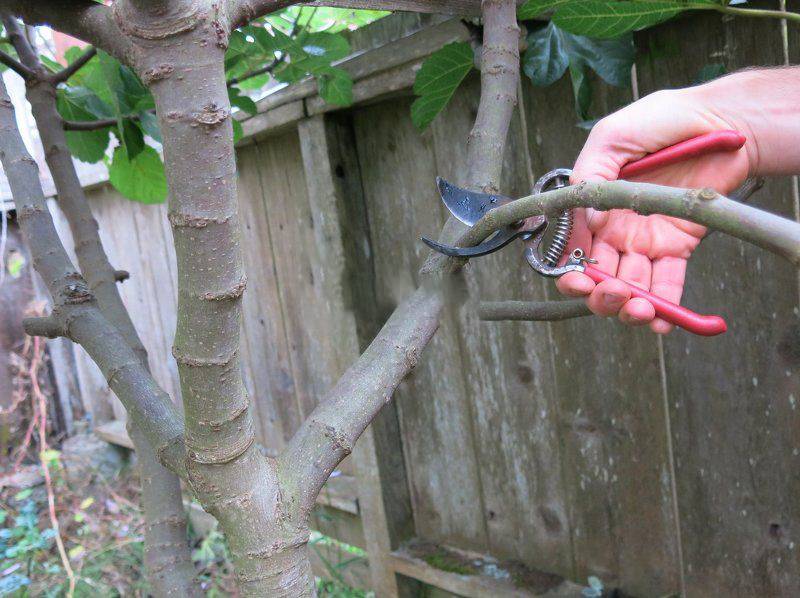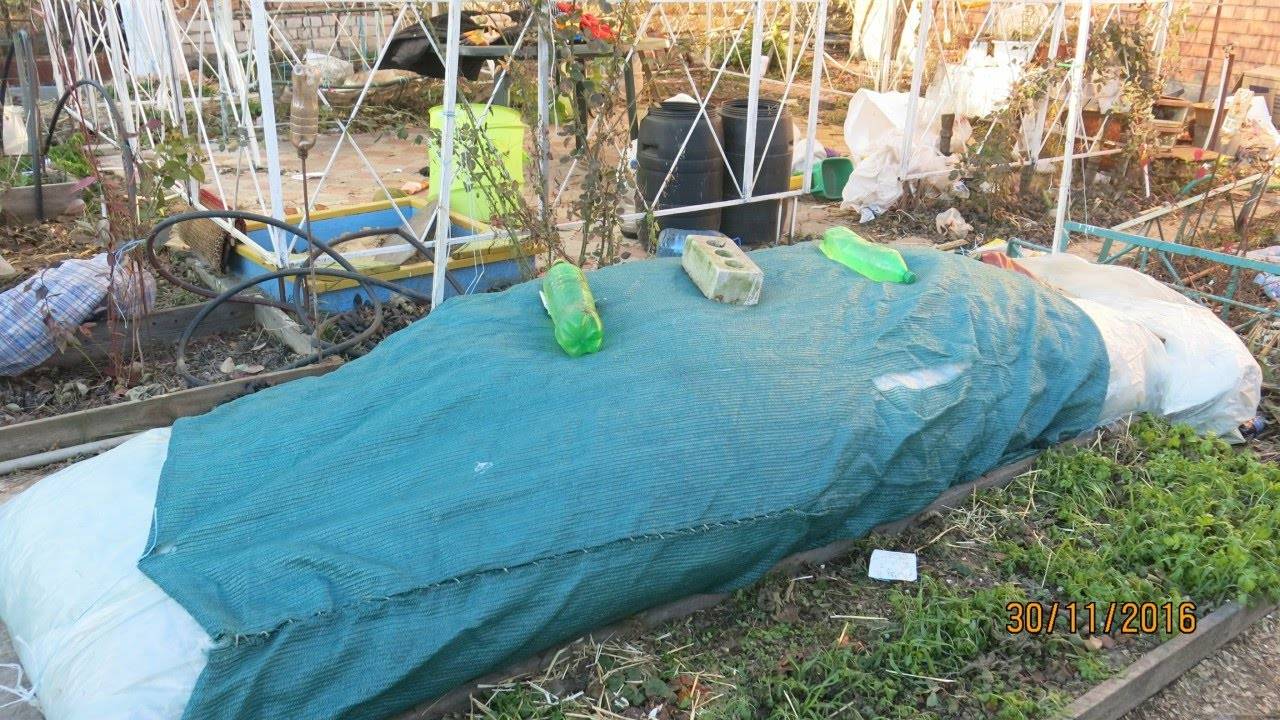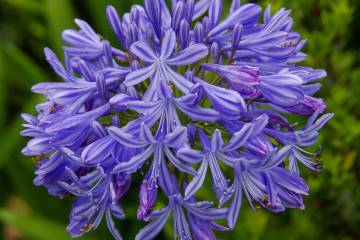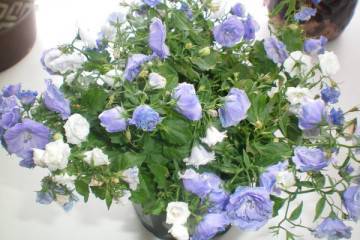Figs - care and cultivation in the open field, pruning
Content:
Russian gardeners are not content with growing traditional pears and apples in their orchards. They also experiment with subtropical plants. One of them is the biblical fig tree. Today, the focus is on the fig tree, figs, care and cultivation in the open field, pruning and other agrotechnical measures during cultivation in the conditions of Central Russia.
Fig: care and cultivation in the open field of middle Russian latitudes
Figs are successfully cultivated in barrels, where they bear fruit. But now the shrubbery has been moved to summer cottages and gardens. Before starting to grow figs in the open field, choose a variety. They are guided by the cold resistance of the culture and the method of pollination.
In the southern regions, in the homeland of the plant, it is pollinated by wasps, blastophages. The plant has an amazing feature: the male and female flowers live on different trees. The flower is inside the fruit. Wasps will climb inside it and transfer pollen from flower to flower.
There is no blatoshage in Russia. There are tree beetles that partially function as wasps. But you can't really rely on them, therefore, in most regions of Russia, only self-pollinating, parthenocarpic varieties are suitable for cultivation:
- "Crimean Black". High-yielding, grows in the Crimea. In middle Russian latitudes, they are grown only with shelter for the winter.
- "Abkhazian violet". Fruits are elongated, ribbed. In the south, it bears fruit twice. The first wave - the weight of the fruit is 80 g, the second - 50 g.
- "Pomorie". Bush figs, early ripening. The bushes are powerful, the fruits are yellow-green - up to 100 g.
- "Early gray". The fruits are round pear-shaped. The color is green, with a strong waxy coating, which gives a gray tint.
- "Dalmatian". Two harvests, large fruits. The skin is yellow, the flesh is reddish.
- "Turkish brown". Red-brown fruits, pear-shaped. Weigh 100 g.
Features of caring for figs
When and how to plant figs depends on the region.
Landing dates
The weather conditions in the Kuban and in the Moscow region, Siberia and Ukraine are different, therefore the landing dates do not coincide.
Fig is a thermophilic plant, so it should be planted in spring. By winter, it will take root and endure frost more easily.
In the Krasnodar and Stavropol Territories, already in March, the earth warms up so much that you can plant figs.
The farther north, the further the disembarkation period moves towards summer. In the Moscow region, the threat of night frosts passes only by May, then they plant a fig.
In Siberia, early self-fertile varieties are grown, because there is a short growing season. The soil for seedlings is ready only in the second half of May.
Pick-up location
Experienced gardeners suggest how, in what place to plant figs in the country so that it takes root in the harsh Russian conditions.
The place is chosen lighted, warm, without drafts. The plant is protected from the north and east winds. Tall buildings and fences should not obscure the culture.
Figs need good drainage. It is preferable to plant on a hillock. If the soil is compacted and does not allow moisture to pass through well, a good layer of stones is laid on the bottom of the planting pit.
Soil for figs
Southern figs are to be grown in suitable soil. In relation to the soil, the tree is unpretentious.But he doesn't like peat soils.
They do not plant in poor soils - they are fertilized with organic matter.
The best option is light soils with humic acids.
Land for landing is prepared as follows:
- The top layer is removed to the bottom of the planned pit or trench.
- The dug soil is mixed with sand for air permeability. Add humus and leafy soil.
Planting figs
When a place has been chosen, a seedling (two-year-old) has been bought, it remains to figure out how to plant figs in the garden in the open field.
- They dig a volumetric hole. Depth - up to 1 meter. On the sides 80 × 80 cm. The root system of the plant grows rapidly to the detriment of the ground part. Therefore, the walls of the pit are laid out with limiters. It can be brick or vertically placed slate of a suitable size.
- Drainage is poured at the bottom with a layer of 30 cm - small stones, expanded clay, broken brick.
- Prepared soil is poured onto it with a slide. A seedling is placed in the center. They tilt a little to the south side, the roots are directed to the north - by winter it will be easier to bend and cover the shoots.
- The pit is covered with the remaining earth, tamped, and the figs are watered. 4 buckets of warm water are poured onto one seedling.
- Further, the earth is mulched with sawdust, shavings.
For convenience and good wintering of fig trees, young trees are planted in trenches. Dig it to a depth of 1.5 m, 1 m wide and make drainage, pour mounds of earth. Each plant is planted, covered with nutritious soil, watered. The trees are located below ground level, therefore, mulched in winter, they easily tolerate cold.
Caring for figs after planting
To give the plant a good start, you need to know how to water, feed, and prune newly planted figs.
Watering
Fig is a moisture-loving culture. A young tree needs frequent irrigation. Watered weekly. Depending on the growth of the seedling, 5 to 10 liters of water are poured under each.
The next year, the overwintered plant is moistened 2 times a month. The norm is a bucket of water under the bush.
The roots of the plant are located below the surface of the soil, so they must not dry out. Otherwise, the leaves will begin to turn yellow and fall off, the fruits will stop pouring.
In spring, there is enough moisture in the soil from rain and melt water. Figs are not irrigated at this time. Watering begins in the second half of May. Finished in the fall, after collecting the figs.
Top dressing
The fig tree is planted in an unfamiliar climate and requires fertilization. Gardeners need to know how to feed their figs outdoors.
The first, at the beginning of the growing season, are nitrogen fertilizing to build up green mass. This is the answer to budding gardeners worried about how to feed figs in the spring after a dormant period.
In the summer, phosphates are added, which help the fruit to flow.
How to fertilize figs at the end of the growing season so that the fruits ripen, growers know. The growing conditions for these crops are similar. A rich crop is harvested when potash fertilizers are applied.
Humic acid is also added, spraying with nutrient solutions is done 2 times a month. Microfertilizers and manure are applied twice a season (5 g per 1 liter of water)
Pruning, crown shaping
The crown is formed by spring pruning. Remove damaged branches, those that grow inward and crossed.
In summer, overgrown branches should be pruned. They are shortened at the level of the fifth leaf so that the lateral processes go.
Reproduction of figs
The fig tree is propagated in traditional ways:
- Breeding with seeds. They are found in the fruit.They are removed, washed on a fine sieve with water. Allow a day to dry on a napkin. Then the seed is sown in a container with nutrient soil, sprayed. Covered with foil, the seeds will germinate in 15-20 days. Further, when 2-3 leaves appear, the seedlings are transferred to other containers. They are looked after as for an adult plant.
- Cuttings. Lignified cuttings are cut from a bush that is 3-4 years old. Blot with a napkin the juice that was released at the cut. Allow the cutting to dry for several hours. Rooted in water or sand. After the roots appear, they are transplanted into a separate pot.
- Layers. They bend down a young branch, dig it in with earth. The place is watered. After 3 weeks, the cut will take root. It is separated from the mother bush and transplanted.
Of these methods, gardeners consider propagation by cuttings to be successful.
Wintering figs in the open field
Figs overwinter in a shelter. Although winter-hardy varieties have been bred, it is not worth risking unnecessarily. The plant can freeze and die.
Shelter is done like this:
- Water the bush to keep the branches flexible. Several branches are bent to the ground, fixed. After 4-5 days, the same is done with a few more branches. So, in 3-4 receptions, all the shoots will be bent.
- When frosts come and the plant loses a leaf, the branches are wrapped in breathable covering material: burlap, agrofibre.
- The bent and wrapped branches are fixed. In winter, they throw snow on them.
If the fig is in the shape of a tree, then a mini greenhouse is built over it. The trunk circle is mulched with a thick layer of sawdust and humus. A frame is installed above the tree, sheathed with polyethylene.
With the first warmth, the plants are opened.
Possible difficulties in growing figs
When all agrotechnical measures are followed, and for some reason the figs in the garden do not bear fruit, this causes anxiety for gardeners.
Possible reasons:
- little light;
- lacks moisture in the soil;
- the crown froze out in winter;
- there are not enough nutrients in the soil;
- thickened branches;
- attacked by pests.
These factors may explain why figs crumble before they mature.
Figs are a resident of the subtropics. The varieties adapted to the harsh winters of Central Russia have been developed. But culture is not easy to grow. Correctly planted in a hole or trench. They choose a place in the garden, prepare a nutritious soil. Then watered and fertilized, pruned and formed a crown. They fight pests and cover for the winter. Only after that they count on the harvest of fruits and homemade preparations from them.
